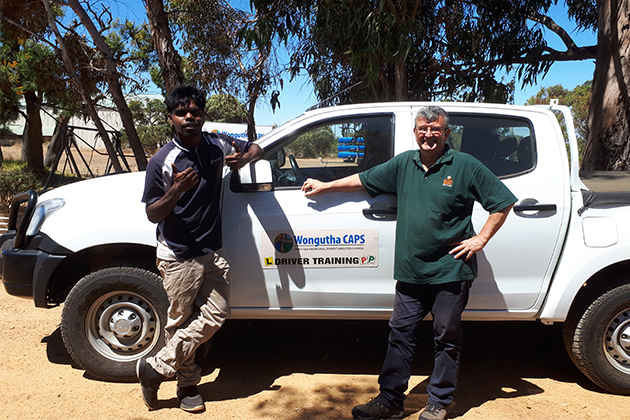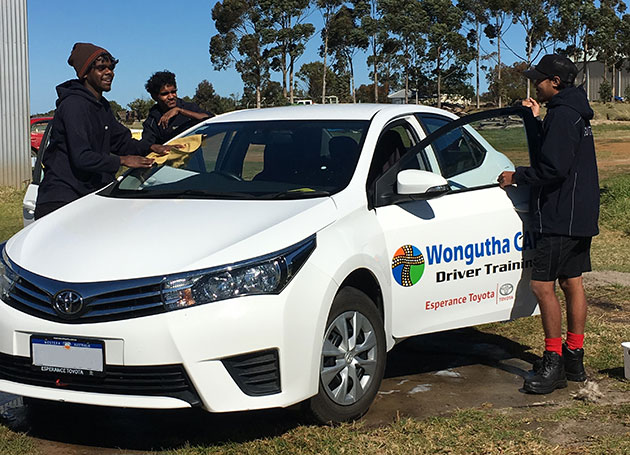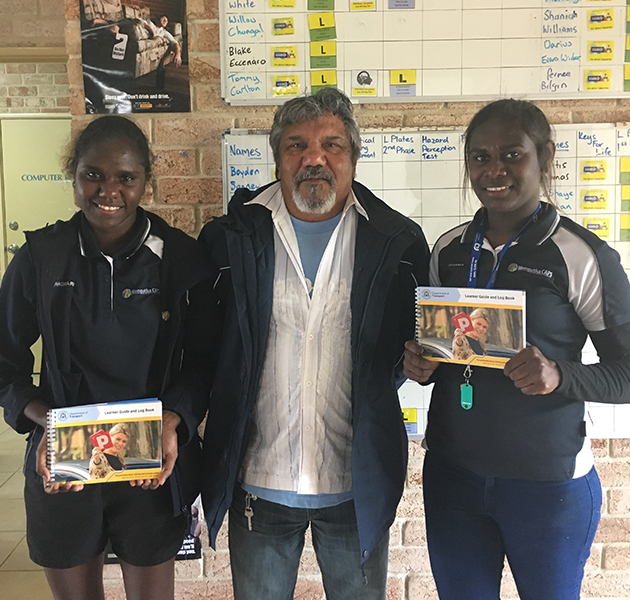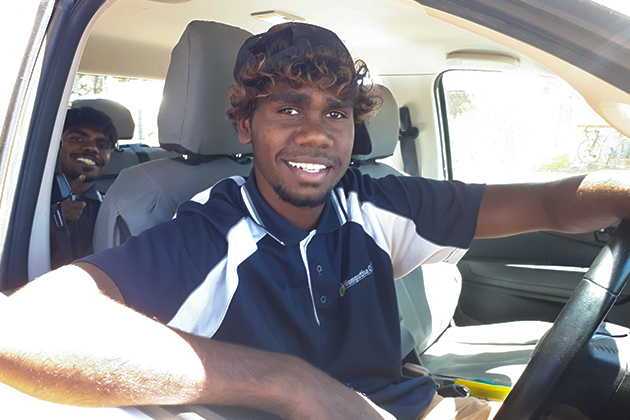5 March, 2019 By: Courtney Pearson
For young Aboriginal people living in remote WA communities, there is no ride share or regular buses and trains to jump on to get to a job or a job interview. If you don’t have a licence and access to a car, getting ahead is going to be a lot harder.
To give students from regional and remote areas the best chance of succeeding once they graduate, an Aboriginal vocational school in WA’s Great Southern put a 'Learn to drive' program on its course list.
Wongutha CAPS is a small school about 30km from Esperance which has been teaching students how to drive safely for more than a decade.
Young people from across WA come to board at the college to complete years 11 and 12 and undertake other vocational training courses.
“We identified that it was difficult for a lot of kids from remote areas to get their learner’s permit and their licence,” says Wongutha CAPS driving program coordinator Andrew Waters.
“If you’re in the city, particularly the Perth Metro, there’s a pretty good public transport system, whereas if you’re out somewhere remote and you need to be able to commute, then you’ve really got to do it yourself,” says Waters.

Cian Wicker completed Year 12 at the college and is currently doing a Cert 4. The 18-year-old is from Norseman, about 700km east of Perth, and has completed the driving course.
She was excited to get her licence for the opportunities it would open up.
“You can’t rely on other people to take you everywhere and anywhere, so I decided to get my licence for myself, so I can get to where I need to be when I need to be there," says Wicker.
“I own my own car now. It’s a Holden Captiva.”
Wicker isn’t just mobile - she’s also learned how to safely negotiate long trips and the challenging conditions remote driving can present, including fatigue.
“If it’s a long trip, I’ll make sure there’s at least two drivers instead of just the one, and that everyone has a seatbelt on.”

Learning on campus
The non-compulsory program is taken by nearly every Wongutha CAPS student.
The students learn in two dual-control training vehicles, a Toyota Corolla and an Isuzu D-Max ute, and staff members take them out on the roads to build up their experience and log book hours.
Once they receive their learner’s permit from the Shire’s office, Waters says he surprises the students by letting them drive back to school.
“They light up like a Christmas tree! But I won’t let them drive until I’ve sussed them out on some quiet streets,” he says.
Between the busy school curriculum, work placement, sports, and downtime in their hostels, students involved in the program have rostered driving sessions each week – and if they time it right, they can get extra time behind the wheel.
“While they’re on their Ls, during the week and on weekends the hostel staff can take the driver training vehicles with them and let the students drive when they’re on their way to town,” says Waters.

The driving journey
Many Wongutha CAPS students come from rural properties where they learn to drive earlier than most. The open space means that there’s lots of space for trial and error – although it’s not the best start to driving.
“Sometimes, a lot of the students out in the remote communities have been driving for years and have picked up a few habits in the bush that aren’t ideal,” says Waters.
“In some instances we have to give them a bit of retraining to make sure that they’ve got the skills so they can pass their licence test.
“You can train them the right way, and it makes it safer for everybody,” says Waters.
He says that one example of a common bad habit is students putting their left foot on the brake pedal rather than keeping it on the clutch.
Student Corey Button started learning to drive on an automatic when he was about 10 years old at his home in the Kimberley.
“My legs were just long enough to reach the pedals,” he says. “It would have been harder to do manual because you had to work both feet.”
Now 17, he’s learning to drive safely and is well on the way to clocking up the hours he needs for freedom on four wheels.

The road to success
Water's students have been getting some well-earned praise from the team at the local licencing centre.
“We’ve had some great feedback from the licence testing guys in town,” says Waters.
“They reckon the kids that come through our driving program are some of the best in terms of percentage. They really are quite good drivers by the time they get to test day,” says Waters.
Button has just has a few more hours to go with the driving staff before he qualifies and he already has some trips planned, including visits to Noonkanbah, the remote community he comes from, near Fitzroy Crossing in the Kimberley.
For young people like Button, being mobile isn’t just about better opportunities for the future. It will also mean maintaining a vital connection to family and community.
Photos supplied by Andrew Waters
Teaching the next generation of drivers
The RAC Community Education team has visited Wongutha CAPS 11 times since 2008 and has taught students important lessons about driver distraction, speed, driving the under the influence, fatigue, and wearing a seatbelt.
Since 2002, the team has taught more than 600,000 students around WA about road safety - that's more than one third of all licensed drivers.
